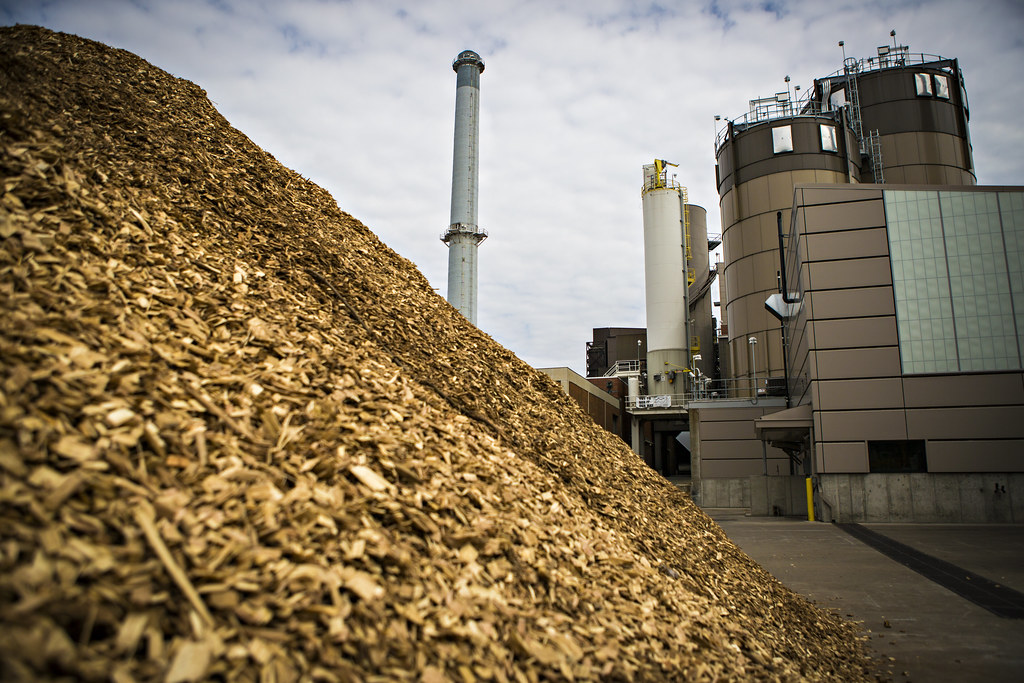Biomass energy plays a smaller but important role in the renewable energy mix of the West Coast (California, Oregon, Washington) of the USA. This article provide you information about the current production, regional distribution, names and locations of plants, as well as future plans.
Current Biomass Energy Production on the West Coast
Biomass energy contributes to electricity generation by converting organic materials (wood, agricultural waste, etc.) into usable energy. In 2023, biomass contributed to about 6.4 GW of electricity generation capacity nationwide. The West Coast states contribute a portion of this total:
- California: 1.8 GW
- Oregon: 0.3 GW
- Washington: 0.2 GW
These capacities represent the maximum potential generation from biomass facilities in each state.
Percentage of Energy Needs Covered by Biomass in West Coast
- California: Biomass contributes around 2-3% of the state’s total energy generation. California’s focus has been on solar and wind, but biomass helps address peak demand and waste management.
- Oregon: Biomass energy contributes 1-2% of Oregon’s total electricity production. Hydropower dominates the state’s energy mix, with biomass serving as a supplementary source.
- Washington: Biomass provides about 1% of Washington’s energy, with hydropower providing the vast majority of the state’s electricity.
Major biomass energy plants in West Coast
California (Southern and Northern)
- Rio Bravo Fresno (Fresno County): Produces 25 MW from wood waste.
- Madera Biomass Power (Madera): 25 MW facility.
- Wheelabrator Shasta (Anderson): Produces around 50 MW using forest residues.
- Pacific Ultrapower Chinese Station (Tuolumne County): A 22 MW plant using wood biomass.
- Covanta Delano (Kern County): 50 MW facility, mainly using agricultural waste.
Oregon (Western)
- Klamath Cogeneration Plant (Klamath Falls): Although primarily natural gas, it has biomass co-firing capabilities.
- Seneca Sustainable Energy (Eugene): 19.8 MW using wood waste.
- Rough and Ready Lumber Plant (Cave Junction): Small-scale biomass plant focused on sawmill residue.
Washington (Western)
- Port Townsend Paper Corporation (Port Townsend): A 25 MW cogeneration plant using wood waste.
- Simpson Tacoma Kraft (Tacoma): Produces energy for both industrial use and grid supply using wood byproducts.
- Georgia-Pacific Camas (Camas): 45 MW plant using wood pulp and other biomass.
Future Plans for Biomass Energy on the West Coast
California biomass future plans
California has ambitious renewable energy targets aiming for 100% carbon-free electricity by 2045. The state plans to increase the role of biomass in the following ways:
- Forest Management: Increased use of forest residues for energy, reducing wildfire risks. Future projects are aimed at converting excess biomass into power.
- Biogas: Expansion of facilities that convert agricultural waste into biogas (a form of biomass energy).
- Waste-to-Energy: Expanding waste-to-energy projects to reduce landfill waste.
Oregon biomass future plans
Oregon has similar goals for a carbon-neutral energy grid by 2040. While biomass is not the primary focus, the state plans to:
- Promote forest biomass use to support rural economies.
- Increase biogas facilities for capturing methane from agriculture and landfills.
- Support research on small-scale distributed biomass systems, particularly in rural and forested areas.
Washington biomass future plans
Washington’s Clean Energy Transformation Act (CETA) mandates 100% clean energy by 2045. Plans include:
- Biomass co-generation in industries like pulp and paper.
- Support for rural biomass plants that utilize forest waste.
- Biogas projects aimed at capturing methane emissions from livestock and landfills.
Conclusion
Biomass energy is an important part of the renewable energy landscape on the West Coast, though it plays a supporting role compared to solar, wind, and hydropower. California leads the region in biomass generation due to its large agricultural and forestry sectors. Oregon and Washington also utilize biomass, particularly in rural areas with significant forestry industries. Future plans in these states include expanding the use of forest residues, developing biogas infrastructure, and supporting waste-to-energy initiatives to meet aggressive climate targets.
